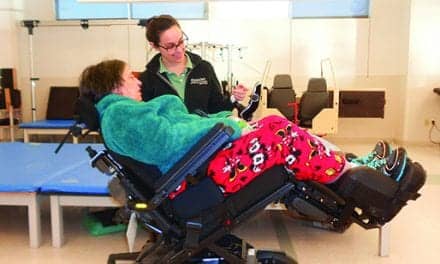While every person’s situation and risk factors for pressure injuries are different, determining an appropriate cushion on a case-by-case basis is critical to the long-term health and overall comfort of wheelchair users. Full-time wheelchair users often are at high risks for pressure injuries, so it is important to have a Complex Rehab Technology (CRT) team evaluation.
What are some factors that contribute to pressure injuries? Users may have absent or decreased sensation and/or an inability to reposition themselves to relieve pressure. The clinical evaluation team takes into consideration spasticity/abnormal muscle tone, movement disorders, and/or orthopedic deformity of the pelvis, spine or lower extremities when evaluating users for proper seating and wheelchair systems.
Overall, the team will look at both primary and secondary supports. Primary supports are the primary weight-bearing components that provide the bulk of the pressure distribution and foundation for postural control. Examples include seat, back support, arm support and food support. Secondary supports are contact surfaces – typically these are lateral, posterior and anterior. Most common are lateral trunk supports, head supports and pelvic belts/chest harnesses.
Besides supports, there are also features available on powered and dependent manual wheelchairs that provide pressure relief. These include powered tilt and/or recline and powered standing and/or recline. Pressure mapping provides another opportunity. This guides the clinical team toward seating choices and tilt and/or recline necessity.
Learn more about how a seating evaluation is done properly to reduce pressure injury issues from Numotion.
White Paper provided by







